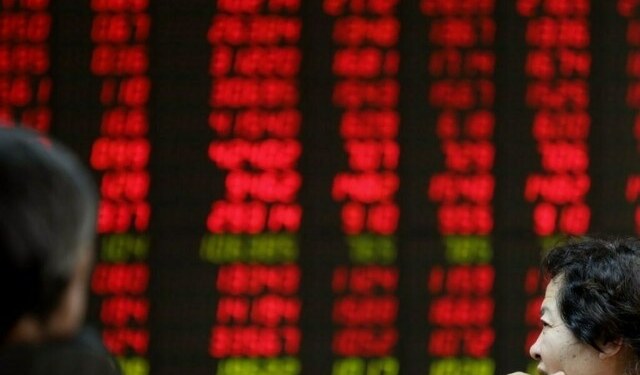CHICAGO: US wheat futures rebounded on Tuesday from the steepest percentage decline in nearly a year during the previous trading session on worries about weather-reduced crops in several key production areas around the world.
Corn futures bounced from the prior session’s contract lows on caution over stressful weather in a crucial month for the US crop, while soybeans eased on concern about a trade fight with top importer China.
Traders also squared positions ahead of Wednesday’s US Independence Day holiday, when markets will be closed.
Chicago Board of Trade September wheat futures rose 11-1/2 cents, or 2.4 percent, to $4.91-3/4 a bushel by 11:26 a.m. CDT (1626 GMT) and September corn gained 6-1/4 cents, or 1.8 percent, to $3.53-1/4 a bushel. August soybeans touched a two-week low and were down 2 cents at $8.51-1/2 a bushel.
Trading in most grains will cease at 12:05 p.m. CDT in the abbreviated pre-holiday trading session.
Wheat led the advance in grains on short-covering and technical buying and as adverse weather has dented crop production prospects in France, the Black Sea region and other key wheat areas around the world.
Hot weather in the United States, meanwhile, has raised concerns about the corn crop in the Midwest, which is due to begin pollinating this month. Recent excessive rain and flooding has also hurt crops in parts of the corn belt.
“We are starting to hear more about problems in southern Minnesota and northern Iowa, a pretty important area of production with too much water. And this heat dome is hanging on for a while and there’s talk that warm nights are affecting the corn crop,” said Jim Gerlach, president of A/C Trading.
The International Grains Council on Monday cut its forecasts for 2018/19 global wheat and corn production as adverse weather dented prospects in Russia and the European Union.
Soybean futures remain anchored by an ongoing US-China trade dispute that pushed prices to the lowest close in two years on Monday.
Beijing is notably due to hike tariffs on US soybeans, the most valuable US farm export to China, from July 6 to a level expected to diminish Chinese demand for US shipments.
Source: Brecorder
























